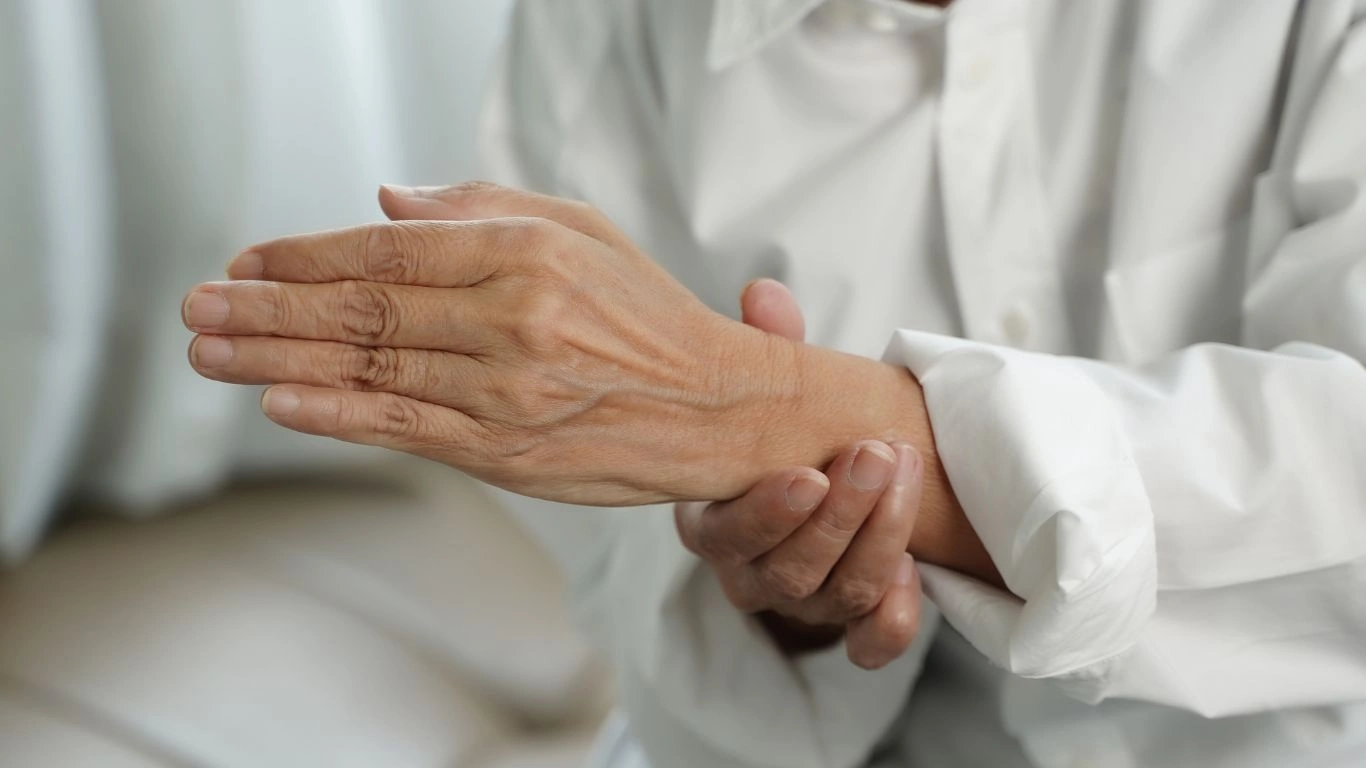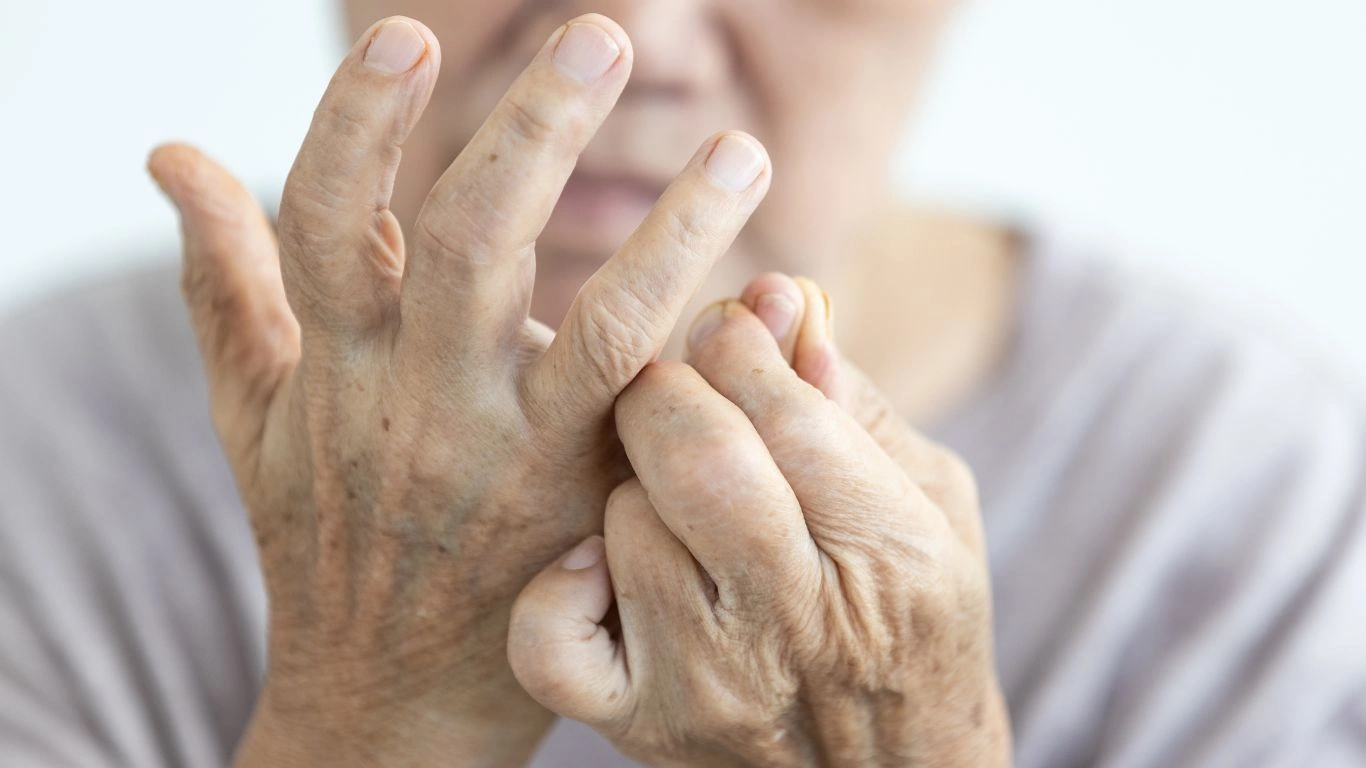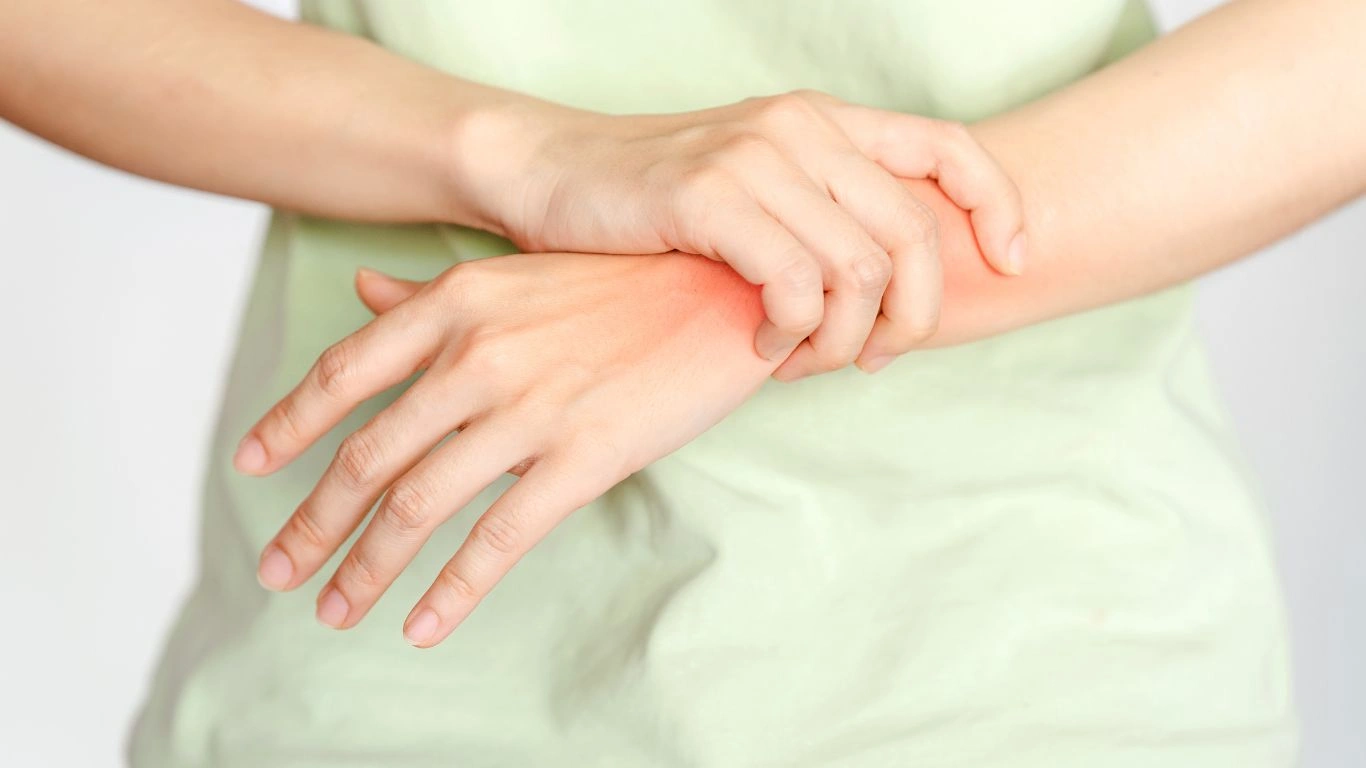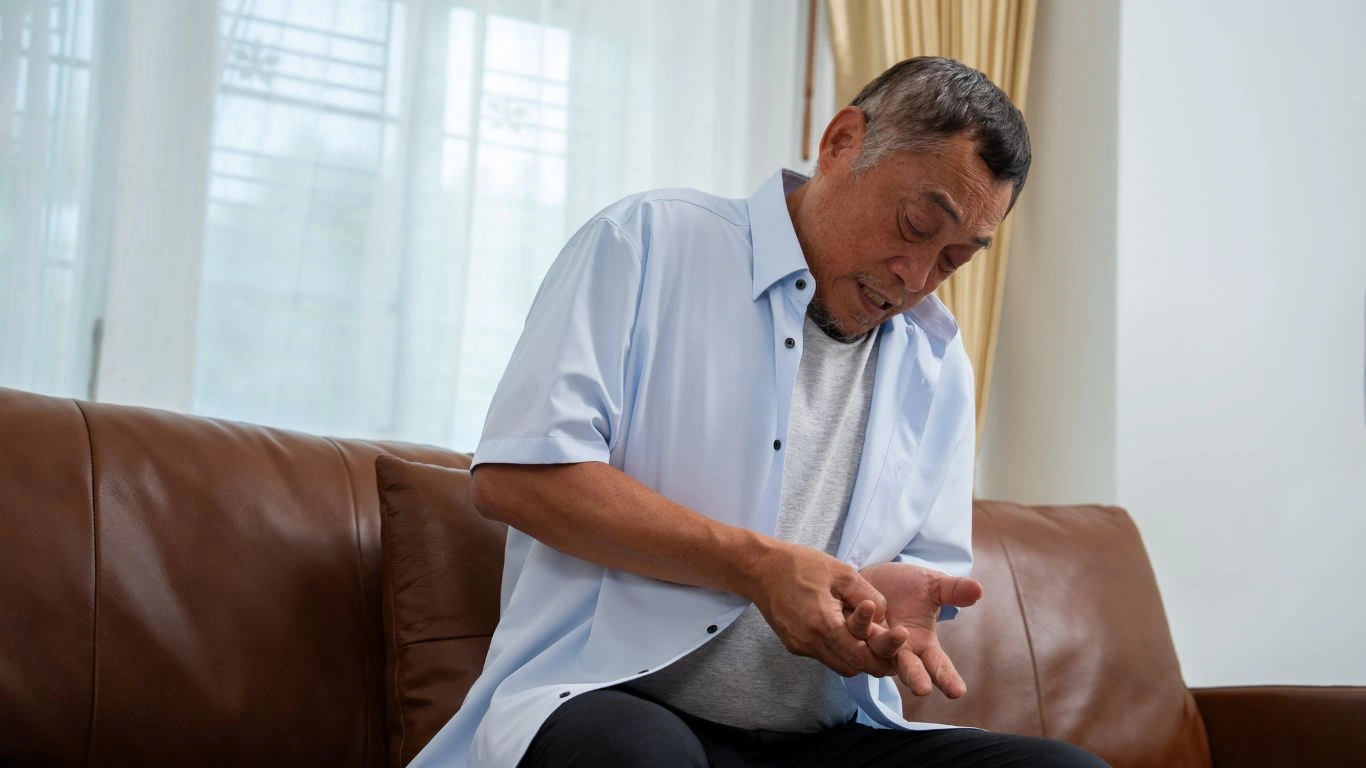Rheumatoid Arthritis and Its Effect on Wrists & Elbows: Key Insights
Rheumatoid arthritis and its effect on the wrists and elbows can be downright frustrating. If you’re dealing with it, you know exactly what I mean. As someone who has spent years diagnosing and treating RA, I’ve seen firsthand how much these joints suffer. The stiffness, swelling, and unpredictable flare-ups can make even the simplest tasks feel like a battle. But here’s the good news: while RA is persistent, we can fight back with the right approach. Let’s dive deep into what’s happening inside those aching wrists and elbows and, more importantly, how you can take control.
Understanding Rheumatoid Arthritis in the Wrists and Elbows

Rheumatoid arthritis (RA) is an autoimmune disease, which means your own immune system mistakenly attacks your joints. And guess what? The wrists and elbows are two of its favorite targets. Unlike osteoarthritis, which is more about wear and tear, RA causes inflammation that leads to joint damage over time. This damage isn’t just painful—it can seriously limit movement if left unchecked.
Why the Wrists and Elbows?
There’s a reason RA tends to go after these particular joints. The wrists are made up of multiple small bones and ligaments that work together to allow fine motor movements. When inflammation sets in, these delicate structures struggle, leading to stiffness and pain. The elbows, on the other hand, act as a hinge for your arms—if RA attacks them, even simple motions like reaching out or lifting objects can become excruciating.
Early Signs You Shouldn’t Ignore
RA symptoms often creep up gradually, and that’s where it gets tricky. Many people brush off the early signs as general fatigue or overuse. Here’s what to watch for:
- Morning stiffness that lasts more than an hour
- Swelling and warmth in the wrists or elbows
- Difficulty gripping objects or making a fist
- Clicking or grinding sounds in the joints
- Persistent pain that doesn’t go away with rest
I’ve had patients tell me they first noticed trouble when twisting a doorknob, opening a jar, or simply typing on a keyboard. If these small tasks start feeling oddly difficult, don’t ignore them.
How RA Progresses in the Wrists and Elbows

RA doesn’t just stop at mild discomfort. Over time, the inflammation can lead to serious complications, including:
- Joint Deformity – Chronic inflammation can cause the wrist bones to shift, leading to the well-known “zig-zag” deformity.
- Loss of Function – As damage progresses, wrist and elbow movement can become severely restricted.
- Bone Erosion – RA can literally wear down the bone, making the joints fragile and prone to further injury.
One of the biggest complaints I hear from patients? The feeling of losing independence. When buttoning a shirt or holding a coffee mug becomes a challenge, the emotional toll can be just as heavy as the physical one.
RA in Elbows: Why It’s More Than Just Pain
While the wrists often take the spotlight, RA in the elbows is equally debilitating. Unlike a simple “tennis elbow” injury, RA-related elbow pain tends to cause:
- Deep aching pain that radiates down the arm
- Loss of extension – making it difficult to fully straighten the arm
- Swelling that compresses nerves, sometimes leading to tingling or numbness
I’ve seen patients who thought their elbow pain was due to overuse, only to realize later that RA was the culprit. Early intervention can make all the difference.
What You Can Do: Managing RA Symptoms in the Wrists and Elbows

Now, let’s talk solutions! While there’s no cure for RA, there are plenty of ways to slow its progression and keep your joints functional for as long as possible.
1. Medications That Help
Doctors typically prescribe DMARDs (Disease-Modifying Anti-Rheumatic Drugs) to prevent long-term joint damage. If those don’t cut it, biologic drugs that target specific parts of the immune system can offer relief.
2. Simple Lifestyle Changes
Even small tweaks to your daily routine can make a huge difference. Here are a few I often recommend:
- Use wrist braces to provide extra support.
- Try heat therapy in the morning to ease stiffness.
- Exercise regularly—yes, movement helps!
- Reduce repetitive motions that strain your joints.
3. Physical Therapy and Gentle Exercises
Hand and wrist exercises designed for RA can keep joints limber. Some of my favorites include:
- Wrist circles – Slowly rotating your wrists to maintain flexibility.
- Finger stretches – Gently spreading your fingers apart and bringing them together.
- Grip strengthening – Using a soft ball or therapy putty.
The key is consistency. A little effort each day can go a long way in preserving movement and reducing pain.
Daily Challenges of RA in the Wrists and Elbows

Living with rheumatoid arthritis in the wrists and elbows means facing everyday obstacles that most people don’t think twice about. I’ve had patients tell me that something as simple as holding a toothbrush, gripping a steering wheel, or buttoning a shirt can turn into a frustrating, painful ordeal.
Struggles with Fine Motor Skills
Because RA affects the small joints in the hands and wrists, fine motor skills are one of the first things to take a hit. Tasks like typing, writing, or even using a smartphone can suddenly feel clumsy and exhausting. And let’s talk about jars—if you’ve ever fought a stubborn lid with RA, you know the struggle is real.
- Difficulty gripping objects without dropping them
- Increased fatigue from simple activities
- Hands feeling weak or unsteady during precise movements
One of my patients once described trying to write with RA as if “someone wrapped my fingers in thick tape and told me to sign my name.” That really hit home for me—RA doesn’t just make things painful, it changes how you interact with the world.
Pain and Stiffness That Disrupt Sleep
If you have RA, you know that nighttime isn’t always restful. Many people experience increased joint pain when they lie down, thanks to inflammation settling into the wrists and elbows. The discomfort can wake you up multiple times during the night, leaving you feeling drained and foggy the next day.
Here are a few tricks that have helped my patients get better sleep:
- Using a wrist splint at night to keep joints in a neutral position
- Applying heat therapy before bed to relax stiff joints
- Adjusting pillows to avoid pressure on the elbows
Sleep is crucial for managing inflammation, so if RA is keeping you up at night, don’t ignore it.
Long-Term Effects of RA on the Wrists and Elbows

RA isn’t just about pain and stiffness—it can cause permanent joint damage over time. Without proper management, the inflammation can lead to deformities that make movement even more challenging.
Joint Fusion and Bone Erosion
When RA goes untreated or isn’t well controlled, the body’s immune system continues attacking the joint lining. This can result in:
- Wrist fusion, where the bones fuse together, limiting movement entirely
- Elbow contractures, making it difficult to extend the arm
- Progressive bone erosion seen on X-rays
One of my patients, a former teacher, developed severe wrist fusion over the years and struggled to write on a whiteboard. It was heartbreaking, but with occupational therapy and adaptive tools, she found ways to keep doing what she loved.
Nerve Compression and Numbness
As RA progresses in the wrists and elbows, swelling and joint deformities can put pressure on nearby nerves, leading to conditions like carpal tunnel syndrome or ulnar nerve entrapment. Symptoms include:
- Tingling and numbness in the hands or fingers
- Sudden weakness in the grip
- Burning pain that radiates up the arm
One thing I always tell my patients: if you start experiencing numbness or loss of sensation, don’t wait—talk to your doctor immediately. Nerve damage can become permanent if left untreated.
Effective Treatments for RA in the Wrists and Elbows

The good news? You’re not powerless against RA. While there’s no cure, early treatment can slow its progression and help you maintain mobility.
Medications That Can Help
RA medications fall into a few categories, each playing a crucial role:
- DMARDs (Disease-Modifying Anti-Rheumatic Drugs) – These slow the disease down and prevent joint damage.
- Biologic drugs – Target specific immune system pathways to reduce inflammation.
- NSAIDs and steroids – Provide short-term relief for pain and swelling.
One of my patients once told me she was hesitant about starting a biologic medication, but after a few months, she noticed a huge improvement in her wrist mobility. Finding the right treatment is a game-changer.
Physical Therapy and Joint Protection Techniques
A good physical therapist can teach you exercises and joint protection techniques that make everyday activities easier. Some strategies include:
- Using ergonomic tools like padded pens or jar openers
- Practicing range-of-motion exercises to keep joints flexible
- Learning energy conservation techniques to reduce strain
One small tip I always share: Use both hands whenever possible to distribute weight evenly and reduce pressure on the wrists.
When Surgery Becomes an Option
If RA has caused severe joint damage, surgery may be necessary. Common procedures include:
- Synovectomy – Removing the inflamed joint lining
- Wrist fusion – Stabilizing the joint to reduce pain
- Joint replacement – In extreme cases, replacing the damaged elbow or wrist
Surgery is usually a last resort, but for those with advanced RA, it can restore lost function and relieve pain.
Empowering Yourself to Live Well with RA
Managing RA in the wrists and elbows isn’t just about medications and doctor visits—it’s about adapting your lifestyle and taking control of your health. From using assistive devices to modifying daily routines, every small adjustment makes a difference.
Remember: you’re not alone in this. Support groups, physical therapists, and rheumatologists (like me!) are here to help you navigate the challenges and find solutions that work for you.
Alternative and Complementary Therapies for RA

Let’s be real—traditional medications and physical therapy are crucial for managing rheumatoid arthritis in the wrists and elbows. But what about alternative treatments? Many of my patients ask if things like acupuncture, herbal remedies, or special diets can make a difference. The short answer? They can be helpful, but they aren’t a cure. Let’s break down what’s worth trying.
Acupuncture and Massage Therapy
Some RA patients swear by acupuncture as a way to reduce inflammation and improve circulation. The theory is that it helps regulate the body’s energy flow (or “qi”), which may lower pain perception. While research on this is mixed, I’ve had patients tell me they felt relief after a few sessions.
Massage therapy can also be beneficial, but it has to be done gently. Deep tissue massage might feel good for some, but for inflamed joints, a light-touch approach is best.
Diet and RA: Can Food Help?
While no diet can cure RA, certain foods can help reduce inflammation. Here’s what to add to your plate:
- Fatty fish (salmon, mackerel) – Rich in omega-3s, which fight inflammation.
- Leafy greens – Packed with antioxidants that may slow joint damage.
- Turmeric – Contains curcumin, a natural anti-inflammatory compound.
On the flip side, some foods can make RA symptoms worse. I always tell my patients to watch out for processed sugars, excessive dairy, and red meats, as they may trigger inflammation in some individuals.
Supplements for Joint Health
Some people find relief with supplements, though results vary. A few that have shown promise include:
- Glucosamine and chondroitin – May support cartilage health.
- Vitamin D – Essential for bone strength, especially if you’re on steroids.
- Fish oil – Helps with joint stiffness and inflammation.
As always, talk to your doctor before starting any supplements. Some can interact with RA medications.
Protecting Your Wrists and Elbows for the Long Haul

Living with rheumatoid arthritis means thinking ahead—protecting your joints now can help prevent future damage. This doesn’t mean avoiding movement altogether, but rather finding ways to reduce strain on your wrists and elbows.
Using Assistive Devices
There’s no shame in using tools that make life easier. Some of the most useful assistive devices for RA include:
- Ergonomic keyboards and mice – Reduce wrist strain when typing.
- Adaptive utensils – Larger grips make eating easier.
- Jar openers and button hooks – Save your wrists from unnecessary stress.
One of my patients told me that switching to an electric can opener was “a total game-changer.” Small adjustments like this can make daily life much more manageable.
Exercise Without Overdoing It
Exercise is crucial for keeping your joints mobile, but finding the right balance is key. Too much strain can trigger a flare-up, while too little movement leads to stiffness.
Some of the best RA-friendly exercises include:
- Gentle stretching – Keeps joints flexible.
- Swimming – Provides low-impact resistance.
- Yoga – Helps with both flexibility and stress reduction.
One tip I always give: listen to your body. If something causes sharp pain, stop. But if an exercise makes you feel a little sore in a good way, that’s usually a sign your joints are getting stronger.
Mental and Emotional Health: Coping with RA
We often talk about RA as a physical condition, but the truth is, it’s just as much a mental battle. Chronic pain, reduced mobility, and daily frustrations can take a toll on your emotional well-being.
Finding Support
RA can feel isolating, especially if people around you don’t fully understand what you’re going through. That’s why I always recommend finding a support system. Whether it’s an online RA community, a local support group, or just a few close friends who “get it,” having people to talk to can make all the difference.
Managing Stress
Believe it or not, stress can actually worsen RA symptoms. When you’re tense, your body releases cortisol, which can increase inflammation. Some stress-busting techniques that work well for my patients include:
- Meditation – Just a few minutes a day can help.
- Journaling – Writing things down can provide clarity.
- Deep breathing exercises – A simple way to reset your nervous system.
Remember, taking care of your mental health is just as important as managing your physical symptoms.
Final Thoughts: Taking Control of Your RA Journey
Rheumatoid arthritis in the wrists and elbows can be challenging, but it doesn’t have to define your life. With the right treatment plan, lifestyle adjustments, and a proactive mindset, you can maintain mobility and live a fulfilling life.
Here’s what I always tell my patients:
- Stay informed – The more you know about RA, the better you can manage it.
- Advocate for yourself – Don’t be afraid to push for the care you need.
- Keep moving – Even small movements help maintain joint health.
Most importantly, be kind to yourself. Managing RA is a journey, and some days will be harder than others. But with persistence and the right strategies, you can take control of your health and continue doing the things you love.
References
Disclaimer
This article is for informational purposes only and should not be taken as medical advice. Always consult with a healthcare professional before making any changes to your treatment plan.

Tarra Nugroho is a dedicated Nurse Practitioner with a strong foundation in family and preventive care. She brings both compassion and clinical expertise to her practice, focusing on patient-centered care and health education. As a contributor to Healthusias.com, Tarra translates medical knowledge into clear, empowering articles on topics like women’s health, chronic disease management, and lifestyle medicine. Her mission is simple: help people feel seen, heard, and informed—both in the clinic and through the content she creates. When she’s not caring for patients, Tarra enjoys weekend hikes, plant-based cooking, and curling up with a good health podcast.






